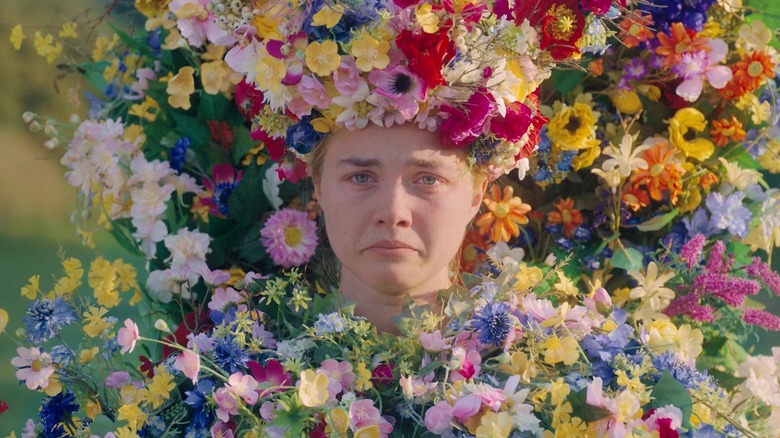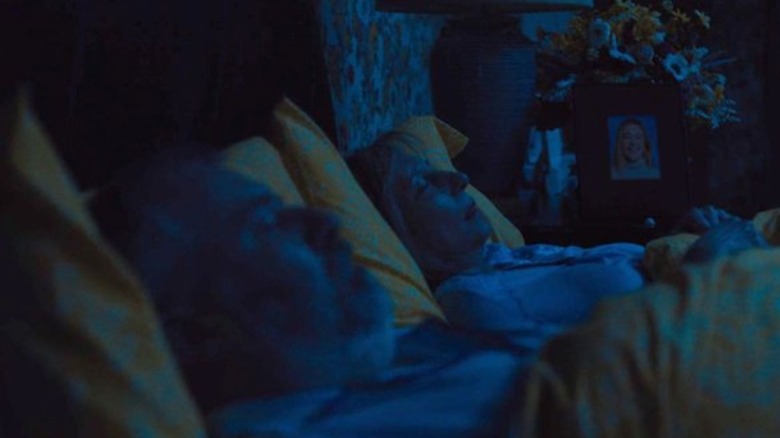Midsommar Hid Some Big Clues To Its Ending Right At The Start
Director Ari Aster is building a reputation as a modern master of horror. His 2019 folk-horror film about an idyllic Scandinavian retreat that is gradually revealed to be a dangerous cult celebration is unforgettable in its strange depravity. Like Aster's "Hereditary," "Midsommar" is a slow-burn horror movie with plenty of foreshadowing and increasingly unsettling imagery. Since its release, the film has been thoroughly analyzed and picked apart. Still, there's a new discovery to be made every time you watch.
There's an abundance of fan theories surrounding "Midsommar" that highlight Aster's talent for indicating the fate of his characters early on in the film. If you closely examine the opening tapestry, you'll notice that it lays out (in a stylized fairy tale format) the entire plot of the movie to come. This foreshadowing continues throughout the film in many forms. The paintings in the bunkhouse also signal future events, and a framed artwork in Dani's apartment showcases a girl in a crown kissing a bear, which is echoed at the end of "Midsommar" when Dani becomes the May Queen and her boyfriend Christian (Jack Reynor) is put inside a bear carcass.
Dani's ascension is also hinted at from the start of the movie, when her sister kills both herself and their parents by filling the family home with carbon monoxide. On the dresser next to Dani's dead mother and father, we see a photo frame of Dani that is surrounded by flowers. Upon a second viewing, the scene feels like a deliberate nod to Dani wearing the flower crown when crowned as the May Queen. Ari Aster has confirmed this is the case, but is there anything more to it?
'Whatever is inevitable is bound to happen'
Some fans have theorized that the positioning of the flowers are a hint that Pelle (Vilhelm Blomgren) is responsible for the death of Dani's parents and sister, and orchestrated the tragedy to lure Dani into the pagan cult. While Ari Aster has affirmed the flowers were symbolic of Dani's fate, he shot down the theory (via HuffPost's Archive) about Pelle staging the murder-suicide scene. Aster explained that several "prophetic pictures" were sprinkled throughout the film as part of his vision, to explore the idea that the inevitable will always happen.
"Well, I'm glad you noticed that. If you notice, there are many prophetic pictures strewn throughout the film. It was our way of weaving in the idea that whatever is inevitable is bound to happen. If you remember, the pictures hanging over the beds of Dani and Christian also foreshadow their respective endings."
Aster wasn't a stranger to the theories about Pelle murdering Dani's family, but the filmmaker has denied the idea.
"Well, yes, I have read that one. I can go as far as to say that it's totally incorrect. He is not."
While Pelle seems to genuinely care about Dani in whatever wretched way he thinks is appropriate, it doesn't make him a murderer — at least where Dani's parents are concerned. He is still to be blamed for manipulating and convincing Dani and Christian's group of friends under the free guise of a vacation when he intended to have them sacrificed. Not cool, Pelle.

